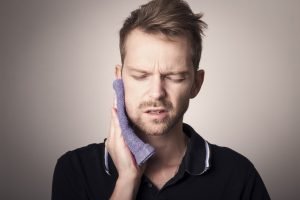
What is TMJ?
Temporomandibular dysfunction is a generalized condition relating to the temporomandibular joint (TMJ) which is made up of the mandibular condyle, the glenoid fossa of the temporal bone, and an articular disc. Simply put, the TMJ is where your jawbone attaches to your skull.
What causes TMJ?
TMJ issues may also be caused externally to the joint (extraarticular):
- Muscle spasm – typically affects muscles of mastication (i.e. masseter, temporalis and pterygoid muscles) and may be brought on by teeth clenching, grinding, postural issues and prolong dental procedures.
- Cervical spine posture
- Temporal tendinopathy
- Fractures (usually of the mandible)
Pain and dysfunction may stem from within this joint (intra-articular):
- Inflammation – Whether the inflammation is triggered by direct trauma to the jaw, aggressive chewing, clenching, grinding, or from systemic arthritis conditions, it can affect the joint capsule itself or the retrodiscal tissue, causing severe pain and limited range of motion.
- Bony structural changes that increase risk of disc displacement
- Trauma – blunt force to the jaw which may displace the joint
- Hypermobility – can lead to degeneration of articular disc which increases the risk of disc displacement without reduction and “lock jaw” when the mouth is opened too largely or for too long.
Related Conditions to TMJ
TMJ dysfunction is also commonly linked to cervical spine/neck dysfunction due to their close biomechanical relationship, hence why assessment of cranio-cervical posture is often indicated in this population of patients.
Common symptoms/signs of TMJ
Common signs and symptoms include jaw pain, clicking and locking of the jaw, reports of clenched teeth or grinding at night. TMJ dysfunction can also cause headaches and neck pain.
How is TMJ treated?
Conservative treatment using a multidisciplinary approach is effective in managing TMJ pain (Paço, Peleteiro, Duarte, & Pinho, 2016). Physiotherapy intervention may include pain management, soft tissue release (i.e. intra and extra-oral massage) and joint mobilization to help reduce muscle tension and improve joint mobility (Tuncer et al., 2013). A cornerstone of TMJ dysfunction management is patient education, which is an important time to address any potential psychosocial contributing factors. It is also an opportunity to promote self-management by empowering the patient with advice on jaw relaxation techniques, self-massage/stretching/mobilization techniques, ideal jaw and cervical spine posture, TMJ loading, and managing aggravating factors.
Risk factors of TMJ
Risk factors include bruxism (grinding) and mandibular instability (Marklund & Wanman, 2010). Certain psychological disorders may also present as a risk factor, given that excessive teeth clenching, grinding and even nail-biting is often associated with stress and anxiety.
Other causes
Other causes of TMJ pain may include:
- Neuropathy (trigeminal neuralgia or neuritis)
- Vestibular dysfunction
- Parotoid blockage
- Referred pain from teeth, sinuses, migraines
- Tumor
References
Marklund, S., & Wänman, A. (2010). Risk factors associated with incidence and persistence of signs and symptoms of temporomandibular disorders. Acta Odontologica Scandinavica, 68(5), 289-299.
Martins, W. R., Blasczyk, J. C., de Oliveira, M. A. F., Gonçalves, K. F. L., Bonini-Rocha, A. C., Dugailly, P. M., & de Oliveira, R. J. (2016). Efficacy of musculoskeletal manual approach in the treatment of temporomandibular joint disorder: A systematic review with meta-analysis. Manual therapy, 21, 10-17.
Paço, M., Peleteiro, B., Duarte, J., & Pinho, T. (2016). The effectiveness of physiotherapy in the management of temporomandibular disorders: a systematic review and meta-analysis. J Oral Facial Pain Headache, 30(3), 210-220.
Tuncer, A. B., Ergun, N., Tuncer, A. H., & Karahan, S. (2013). Effectiveness of manual therapy and home physical therapy in patients with temporomandibular disorders: A randomized controlled trial. Journal of bodywork and movement therapies, 17(3), 302-308.
